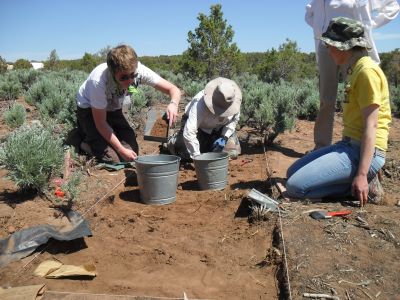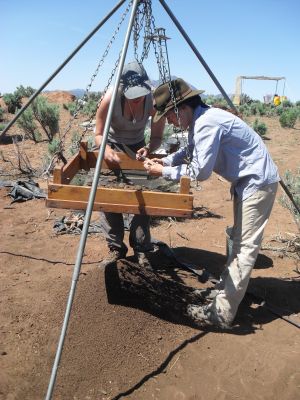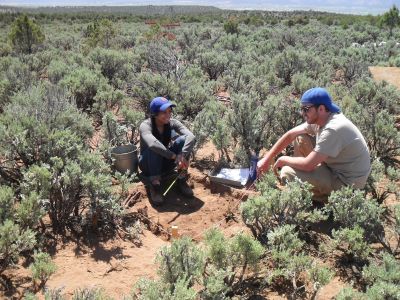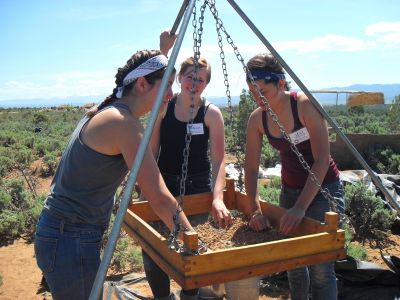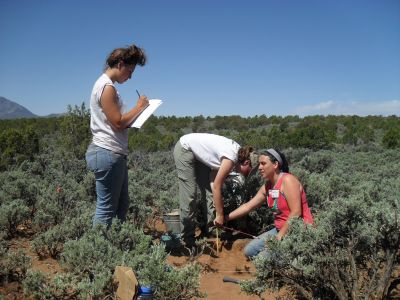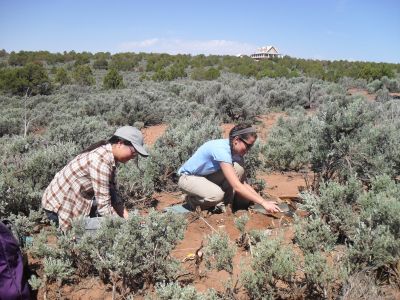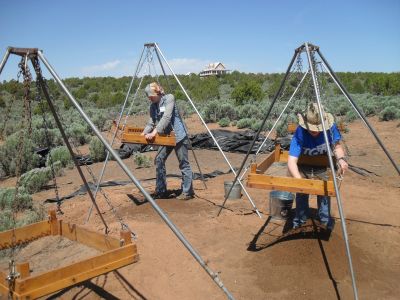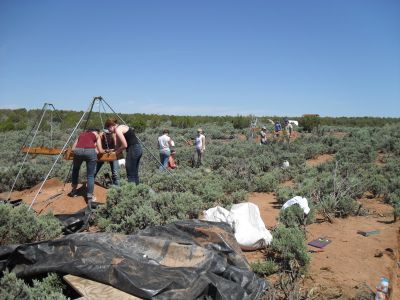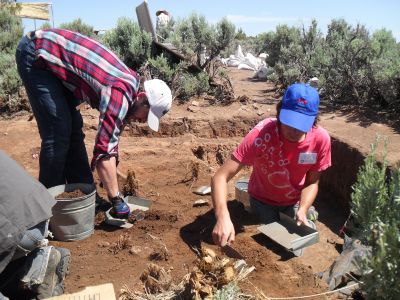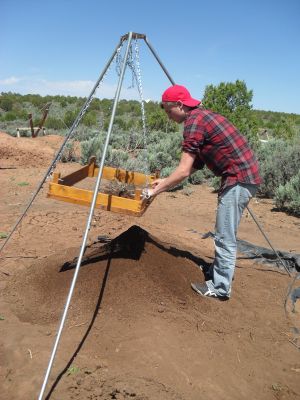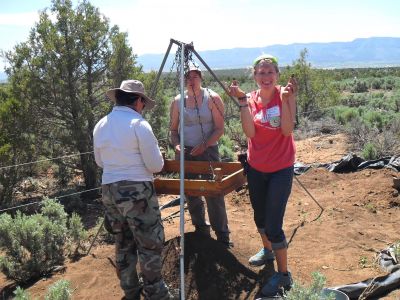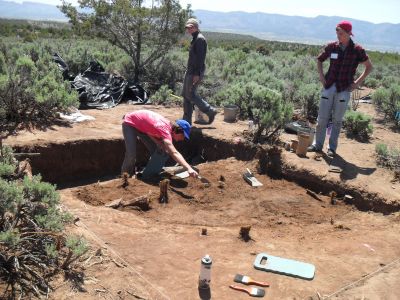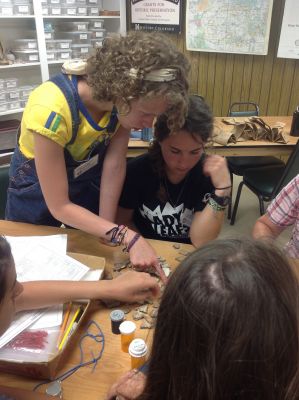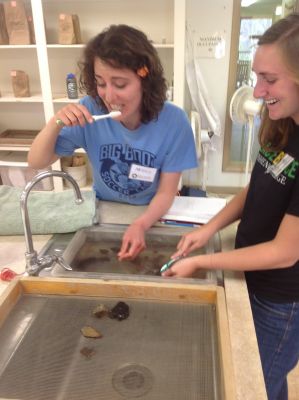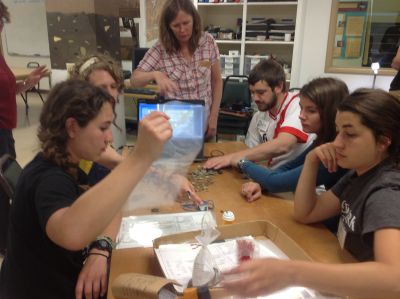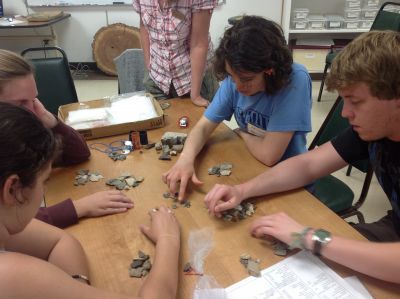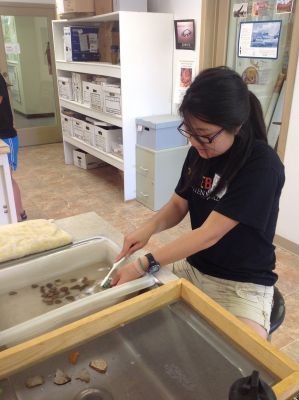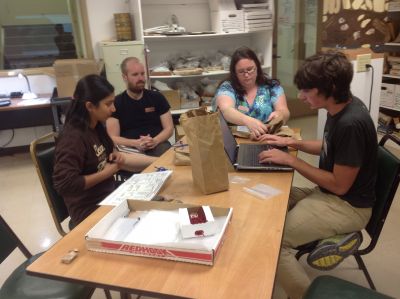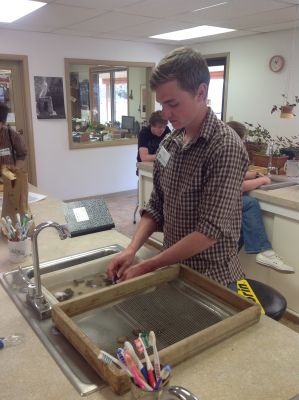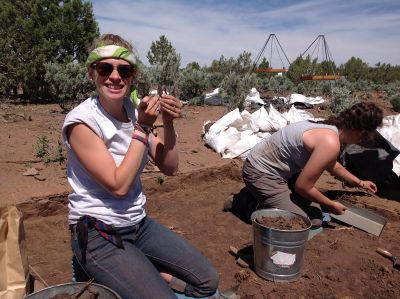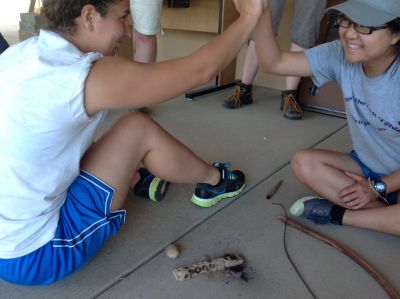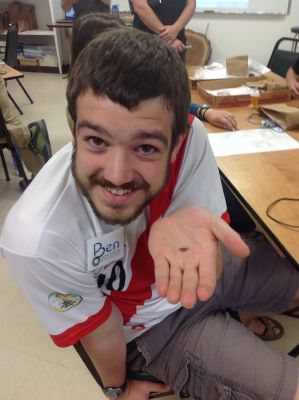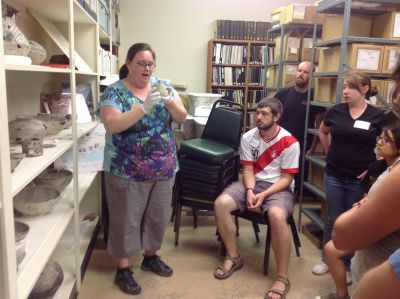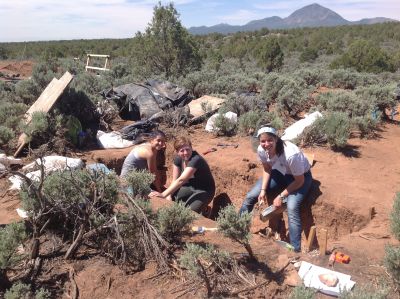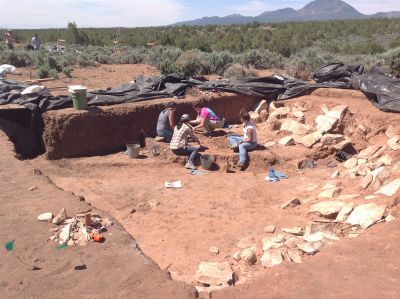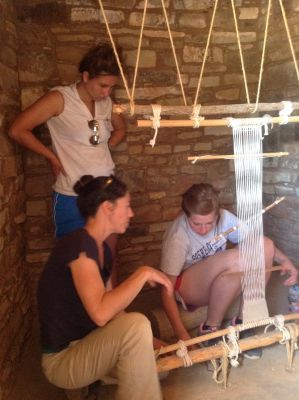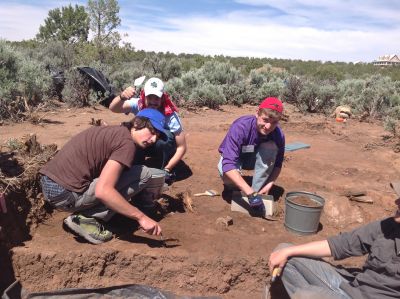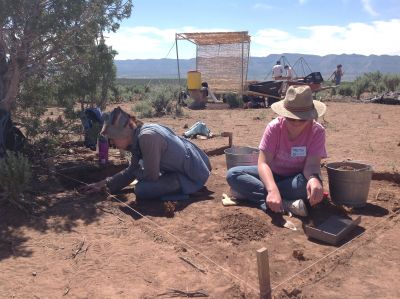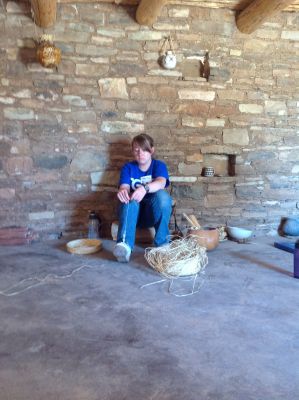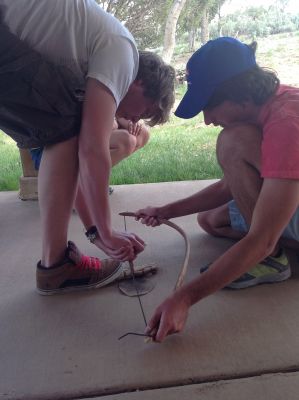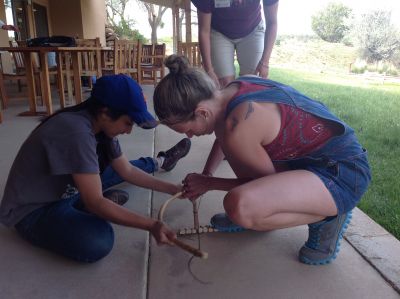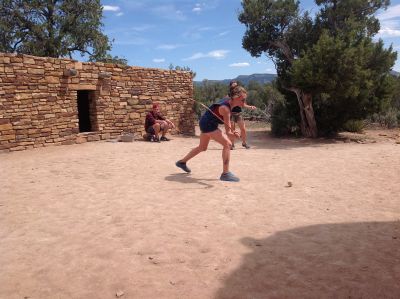It’s not what you find, it’s what you find out. This has been our mantra at Crow Canyon Archaeological Center this past week.
Our week has been one of learning about what archaeologists do and how they represent Native Americans through the questions they ask.
On Monday, we did a mock dig in a classroom and toured the site we were going to help excavate later this week. The name of the site we will work on is a Basketmaker III site, called the Dillard’s site. The Basketmaker III era includes the time period just after the transition from hunter-gatherer to agricultural practices like growing corn, beans, and squash. This time period also includes the start of weaving baskets, making pottery, and building stone structures for shelter and religious purposes.
On Wednesday, we got to learn how archaeologists identify and catalog artifacts found in the field. We helped in the lab to identify and catalog several bags of artifacts which included pottery sherds, flakes, and projectile points.
After a day in the lab, we were ready to help out in the field and experience an excavation. Thursday and Friday mornings were spent outside on the Dillard’s site doing excavations. We split up into groups of two and three and started digging – the archaeological way! We were working on digging pithouses, middens (trash piles), and the Great Kiva. The work includes leveling the ground as we dig with a trowel and then sifting it to separate artifacts from the dirt. We helped find post holes, projectile points, and pieces of animal bones.
All of the artifacts that we and others find at this site will be taken back to the lab where the analysis will begin. With analysis, we will be able to better learn the meaning of the artifacts and the way of life of the Basketmaker time period.
We have enjoyed our stay at Crow Canyon learning about the different roles of archaeologists.





